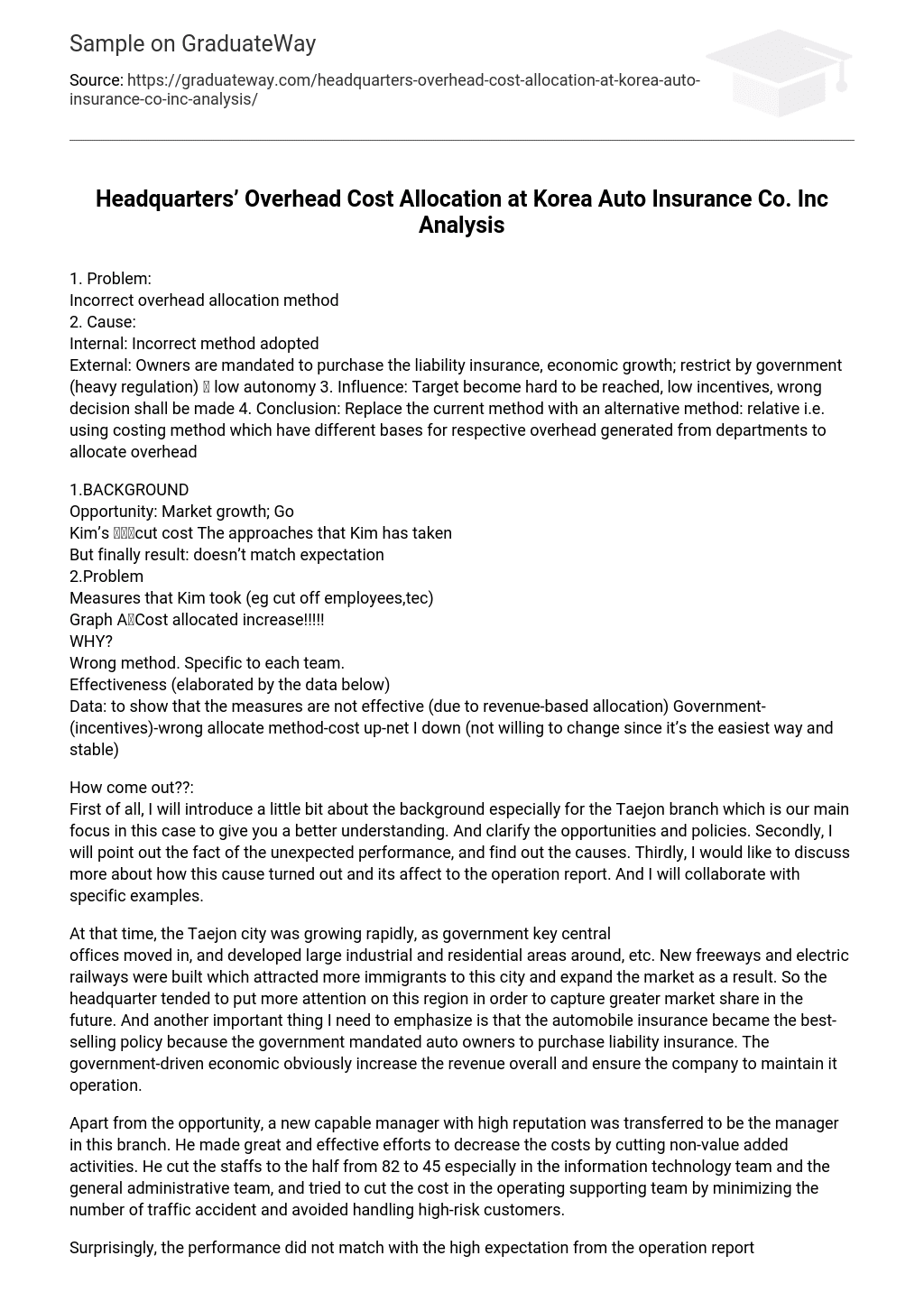To begin with, I will give a brief introduction to the background of the Taejon branch. This will help you grasp the context and comprehend the various opportunities and policies at play. Subsequently, I will delve into an examination of the unforeseen performance and ascertain its underlying factors. Additionally, I will investigate how these causes have influenced the operation report, providing concrete instances to corroborate my analysis.
During that time, the city of Taejon experienced significant growth. This was due to the relocation of key government central offices, resulting in the development of extensive industrial and residential areas. In addition, the construction of new freeways and electric railways played a pivotal role in attracting immigrants to the city and expanding the market.
The headquarters focused more on this region to secure a larger market share in the future, and it is important to note that automobile insurance became the top-selling policy due to the government’s requirement for auto owners to have liability insurance. The government’s influence on the economy significantly boosted overall revenue and ensured the company’s continued operation.
Besides the chance, a highly esteemed manager with a strong track record was reassigned to oversee this branch. The manager implemented significant and successful strategies to reduce expenses by eliminating unnecessary tasks. This included reducing the workforce by half, from 82 to 45 employees, particularly in the information technology and general administrative departments. Additionally, efforts were made to curtail costs in the operating support team by minimizing traffic accidents and avoiding high-risk customers.
Despite the operation report and financial statement of the Taejon branch indicating high expectations, the performance was surprisingly disappointing. While the revenue experienced a dramatic increase of 22%, the net income only saw a 14% increase, resulting in a much lower figure compared to the previous period.
However, there is a reason why the overhead cost increased according to the report. As I previously stated, the government implemented strict regulations that excessively protected the industry and hindered competition. Additionally, these regulations limited the company’s operational independence, leading it to choose the simplest and least controversial method of cost allocation. This involved distributing the cost proportionally to the revenue generated by each branch, without considering the variations in cost structure between branches. Due to the diverse activities carried out by different branches, the differences in overhead expenses were significant. Consequently, the inappropriate cost allocation method had significant managerial implications.
Not all costs are related to revenue. There are certain costs that stand alone, such as employee training, investment team activities, and handling traffic accidents in the operating support team. Additionally, there are costs that are uniform across branches, like operating performance preparation, general administrative team maintenance costs, and marketing team advertising expenses.
Using a single cost driver to determine cost allocation is unwise and can have negative long-term effects on a firm’s value. This is because it can lead to incorrect incentives for employees and penalize branches that generate more revenue. Therefore, an alternative method for overhead allocation is necessary.





